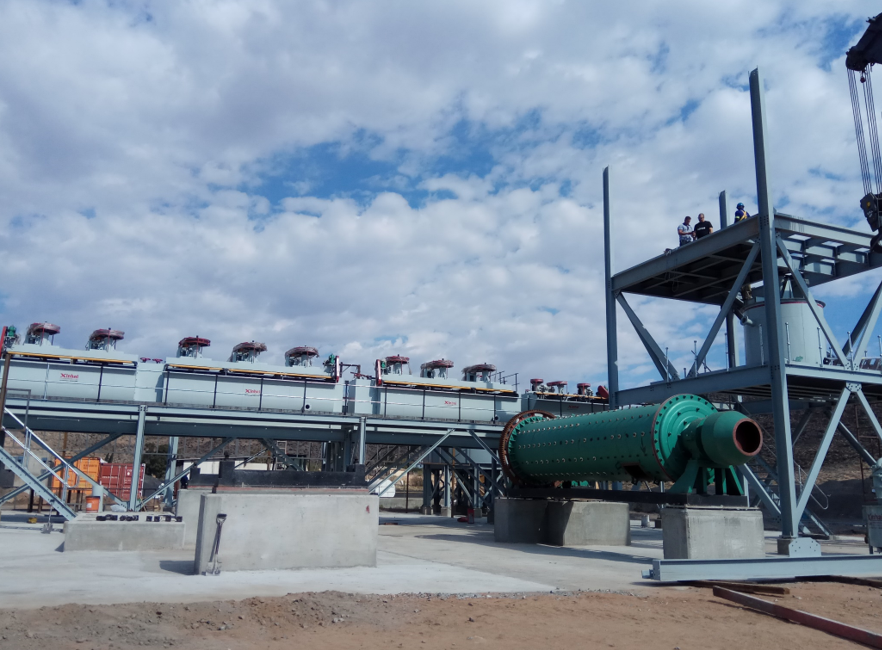Rutile ore is a complex ore composed of multiple minerals, with low grade and fine particle size. Rutile concentrate requires a titanium dioxide content of above 87.5%. Therefore, rutile beneficiation technology often uses gravity separation, magnetic separation, flotation and their combination processes.
About rutile
Rutile is the most common natural form of titanium dioxide. The chemical formula is TiO2, and its ingredients often contain elements such as Fe, Nb, Ta, Cr, and Sn. It belongs to the tetragonal crystal system; the crystals are columnar and needle-shaped. Rutile is an important raw material for the production of chemical products such as titanium sponge and titanium dioxide. Colors include reddish brown, purple, yellow, green, black, etc. Rutile can form in a variety of rocks and can be found in acidic magmatic rocks, pegmatites, crystalline rocks, gneiss, amphibolite, eclogites, etc. Coarse crystals are mainly produced in pegmatites. As the original rock weathers, the rutile is transferred to the placer deposits.
The redstone ore beneficiation process is complex, and it is difficult to obtain high-purity products through single separation. Multiple beneficiation methods are often used in conjunction with beneficiation: such as magnetic separation, flotation, gravity separation, electric separation, pickling, etc., to obtain high-quality rutile Concentrate.
Gravity separation is most suitable for processing placer gold rutile ore. When separating native rutile ores, gravity separation is often critical for enrichment. When sorting rutile ore, gravity desliming and tailings are used as roughing operations, and most of the coal slime can be discarded. The shaking table can separate quartz, tourmaline, garnet and some leukosite as tailings. Rutile is concentrated in the medium ore and concentrate of the shaking table.
Magnetic separation can separate magnetic minerals such as permeable ilmenite and magnetite from rutile minerals. In actual production, when rutile is mixed into magnetic products, the color of this rutile appears black. Usually this kind of rutile contains more than 2% iron oxide and has weak magnetism. This type of rutile is often called iron rutile. In the separation of rutile ore, magnetic separation combined with other mineral separation methods can effectively pre-select and enrich rutile ore.

Electric mineral separation is a mineral separation method based on the conductivity of minerals and the different surface conductivities of various minerals. Since silicate and zircon are non-conductive, electroseparation can effectively separate conductive and non-conductive minerals and reduce impurity content.
After rutile ore is separated by gravity separation, magnetic separation, electric separation, flotation and other methods, many silicates, iron and other impurity minerals still adhere to the edges and cracks of the mineral. The pickling process removes these impurities and improves the quality of the concentrate.
© 2021 Yantai KZ Mining Processing Technology & Equipment Inc.